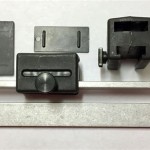Mirroring Your MacBook Screen to a Samsung TV: A Comprehensive Guide
Mirroring a MacBook screen to a Samsung TV offers numerous benefits, from enhancing presentations to enjoying multimedia content on a larger display. This process allows users to share documents, photos, videos, and even entire applications from their MacBook to the TV, providing a more immersive and collaborative viewing experience. There are several methods available for achieving this, each with its own advantages and disadvantages. This article provides a detailed overview of the various techniques for mirroring a MacBook screen to a Samsung TV, ensuring a seamless and efficient connection.
Understanding Screen Mirroring Technologies
Before delving into the specific mirroring methods, it is crucial to understand the underlying technologies that facilitate this process. Screen mirroring essentially involves transmitting the visual output from the MacBook to the Samsung TV wirelessly or through a wired connection. Several technologies are commonly employed, including:
AirPlay: Developed by Apple, AirPlay enables wireless streaming of audio and video between Apple devices, including MacBooks, iPhones, and iPads, to compatible devices like Apple TVs and some smart TVs, including newer Samsung models. It offers a seamless and high-quality mirroring experience. AirPlay utilizes Wi-Fi to establish a connection and supports resolutions up to 4K, depending on the capabilities of the source and destination devices.
Miracast: This wireless display standard allows devices to mirror their screens to compatible TVs and displays without requiring a Wi-Fi network. It establishes a direct connection between the devices, which can be advantageous in environments where Wi-Fi connectivity is unreliable or unavailable. However, Miracast support can vary between different devices and manufacturers.
HDMI: High-Definition Multimedia Interface (HDMI) is a widely used wired connection standard for transmitting high-quality audio and video signals between devices. Using an HDMI cable is a reliable method for mirroring a MacBook screen to a Samsung TV, ensuring a stable and high-resolution connection. Adapters may be required depending on the ports available on the MacBook.
Understanding these technologies is essential for selecting the most appropriate mirroring method based on the specific requirements and hardware capabilities.
Methods for Mirroring a MacBook to a Samsung TV
Several approaches can be used to mirror a MacBook screen to a Samsung TV. The optimal method depends on the MacBook model, the Samsung TV model, and the desired level of convenience and performance.
Using AirPlay 2: AirPlay 2 offers a straightforward way to mirror a MacBook screen to compatible Samsung TVs. Most newer Samsung Smart TVs support AirPlay 2, making this a convenient option.
To use AirPlay 2:
- Ensure both the MacBook and the Samsung TV are connected to the same Wi-Fi network.
- On the MacBook, click the Apple menu in the top-left corner of the screen.
- Select "System Preferences" then "Displays".
- In the Displays preferences pane, click the "Display" tab.
- Look for the "AirPlay Display" dropdown menu. If the Samsung TV is detected, it will appear in the list.
- Select the Samsung TV from the list.
- The MacBook screen will now be mirrored to the Samsung TV. If prompted, enter the AirPlay code displayed on the TV screen into the MacBook.
- To stop mirroring, select "Turn AirPlay Off" from the "AirPlay Display" dropdown menu.
Alternatively, users can also access AirPlay mirroring through the Control Center on macOS:
- Click the Control Center icon in the menu bar (usually located in the top-right corner of the screen).
- Select "Screen Mirroring".
- Choose the Samsung TV from the list of available devices.
- Enter the AirPlay passcode displayed on the TV, if prompted.
AirPlay 2 provides a seamless and high-quality wireless mirroring experience. It also supports extended desktop functionality, allowing the TV to function as a secondary display.
Using an HDMI Cable: A direct HDMI connection provides a reliable and high-quality mirroring solution, especially for older Samsung TV models that may not support AirPlay 2.
To use an HDMI cable:
- Identify the available ports on the MacBook. Newer models typically have USB-C/Thunderbolt ports, while older models may have Mini DisplayPort or HDMI ports.
- If the MacBook does not have an HDMI port, acquire a suitable adapter. A USB-C to HDMI adapter is commonly used with newer MacBook models.
- Connect one end of the HDMI cable to the adapter (if necessary) and then to the MacBook. Connect the other end of the HDMI cable to an available HDMI port on the Samsung TV.
- Turn on the Samsung TV and select the corresponding HDMI input using the TV remote.
- The MacBook screen should now be mirrored to the Samsung TV. If the screen is not displaying correctly, adjust the display settings on the MacBook.
To adjust display settings on the MacBook:
- Click the Apple menu and select "System Preferences".
- Choose "Displays".
- Under the "Arrangement" tab, ensure that "Mirror Displays" is checked if mirroring is desired. If an extended desktop is preferred, uncheck "Mirror Displays" to use the TV as a second screen.
- Adjust the resolution and refresh rate settings as needed to optimize the display quality on the Samsung TV.
An HDMI connection offers a stable and reliable solution, especially for demanding applications like video editing or gaming, where minimizing latency is crucial.
Using Third-Party Screen Mirroring Applications: Several third-party applications are available that facilitate screen mirroring between MacBooks and Samsung TVs. These applications often provide additional features and flexibility compared to the built-in AirPlay functionality.
Examples of popular third-party screen mirroring applications include:
- AirBeamTV Samsung TV Screen Mirroring: This application is designed specifically for mirroring a MacBook screen to Samsung TVs. It offers a user-friendly interface and supports high-quality streaming with minimal latency.
- Reflector: Reflector allows a MacBook to receive AirPlay connections from other devices, including iPhones, iPads, and other MacBooks. It can be used to mirror the MacBook screen to a computer connected to the Samsung TV via HDMI.
- AirParrot: Similar to Reflector, AirParrot enables screen mirroring and extended desktop functionality between MacBooks and other devices. It supports various streaming protocols, including AirPlay and Google Cast.
To use a third-party screen mirroring application:
- Download and install the chosen application on the MacBook.
- Follow the application's instructions to connect to the Samsung TV. This typically involves selecting the TV from a list of available devices and entering a connection code displayed on the TV screen.
- Adjust the application's settings to optimize the display quality and performance.
Third-party screen mirroring applications can be a useful alternative if AirPlay 2 is not supported or if more advanced features are required.
Troubleshooting Common Mirroring Issues
While mirroring a MacBook screen to a Samsung TV is generally a straightforward process, users may encounter various issues. Here are some common problems and their solutions:
No Device Detected: If the Samsung TV is not appearing in the list of available AirPlay devices or within the third-party application, ensure that both the MacBook and the TV are connected to the same Wi-Fi network. Verify that AirPlay is enabled on the Samsung TV in the settings menu. Restart both devices and try again.
Poor Video Quality: If the video quality is poor or the connection is unstable, try moving the MacBook closer to the Samsung TV to improve the Wi-Fi signal strength. Reduce the resolution settings on the MacBook to decrease the bandwidth requirements. Close any unnecessary applications that may be consuming network resources.
Audio Issues: If there is no audio or the audio is distorted, check the audio output settings on the MacBook. Ensure that the Samsung TV is selected as the audio output device. Adjust the volume levels on both the MacBook and the TV. If using an HDMI connection, verify that the HDMI cable is properly connected and that it supports audio transmission.
Latency Problems: If there is noticeable lag between the MacBook and the Samsung TV, try using an HDMI connection instead of a wireless connection. Reduce the resolution settings on the MacBook. Ensure that the Samsung TV is set to "Game Mode" or a similar low-latency mode, if available.
Compatibility Issues: If encountering compatibility issues with a third-party screen mirroring application, ensure that the application is compatible with the MacBook's operating system and the Samsung TV model. Try updating the application to the latest version or contacting the application developer for support.
By following these troubleshooting steps, users can resolve most common mirroring issues and ensure a smooth and enjoyable viewing experience.
In conclusion, mirroring a MacBook screen to a Samsung TV can be accomplished through various methods, each offering a distinct set of advantages. Whether employing AirPlay 2 for its seamless wireless connectivity, relying on a direct HDMI connection for its stability, or leveraging third-party screen mirroring applications for advanced features, users can tailor their approach to suit their specific needs and preferences.

Best And Easy Ways To Mirror Mac Samsung Smart Tv

6 Ways How To Mirror Your Macbook Samsung Tv

How To Mirror Mac Screen Samsung Tv Without Apple

How To Screen Mirror Macbook Samsung Tv

Screen Mirroring Mac Macbook To Samsung Tv Airbeamtv

How To Mirror Macbook Samsung Smart Tv

How To Natively Screen Mirror Your Android Phone Mac Or Windows Computer

How To Mirror Macbook Samsung Smart Tv

Screen Mirror To Samsung Tv Android Mac Ios Free App

How To Connect A Mac Tv With Hdmi For Full Audio Support Osxdaily








